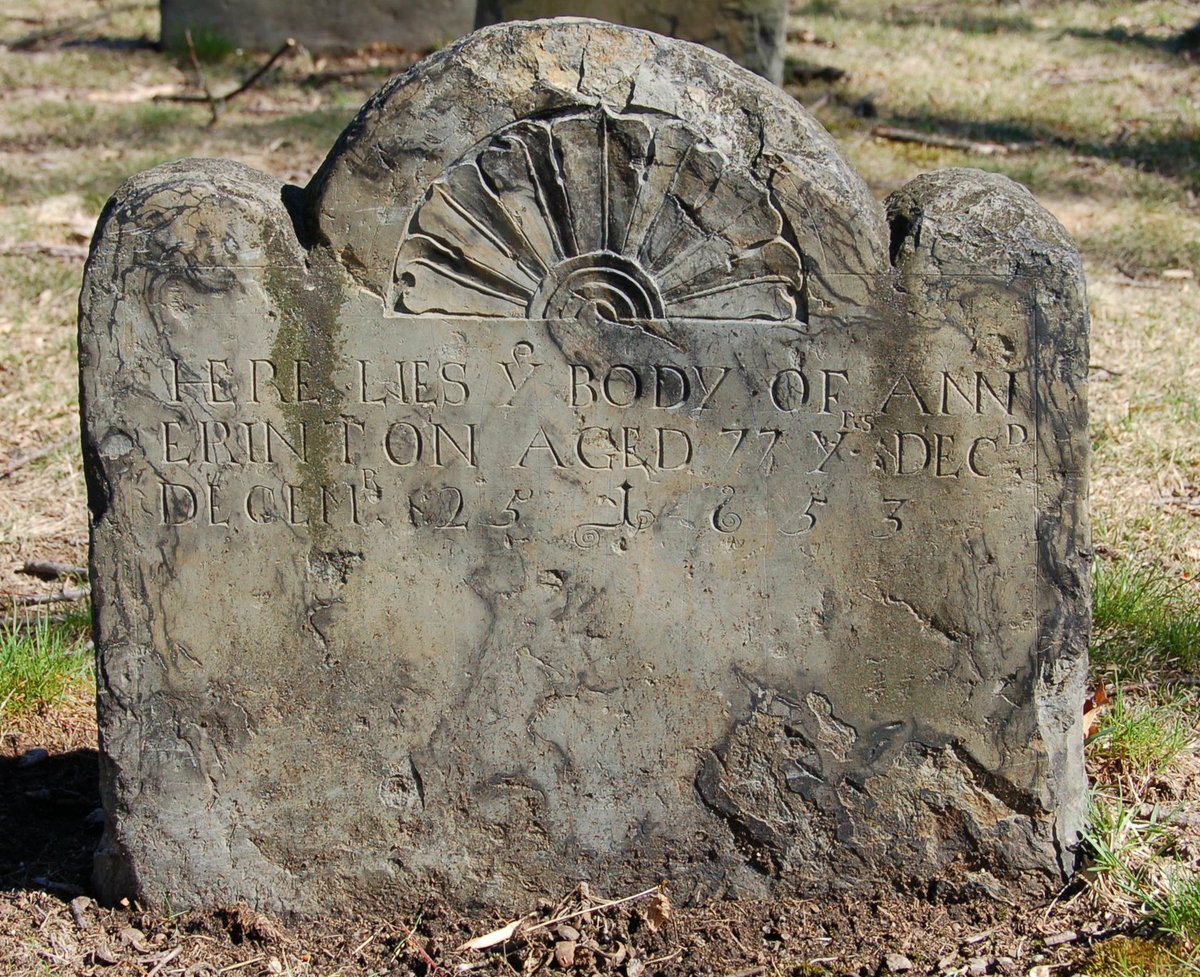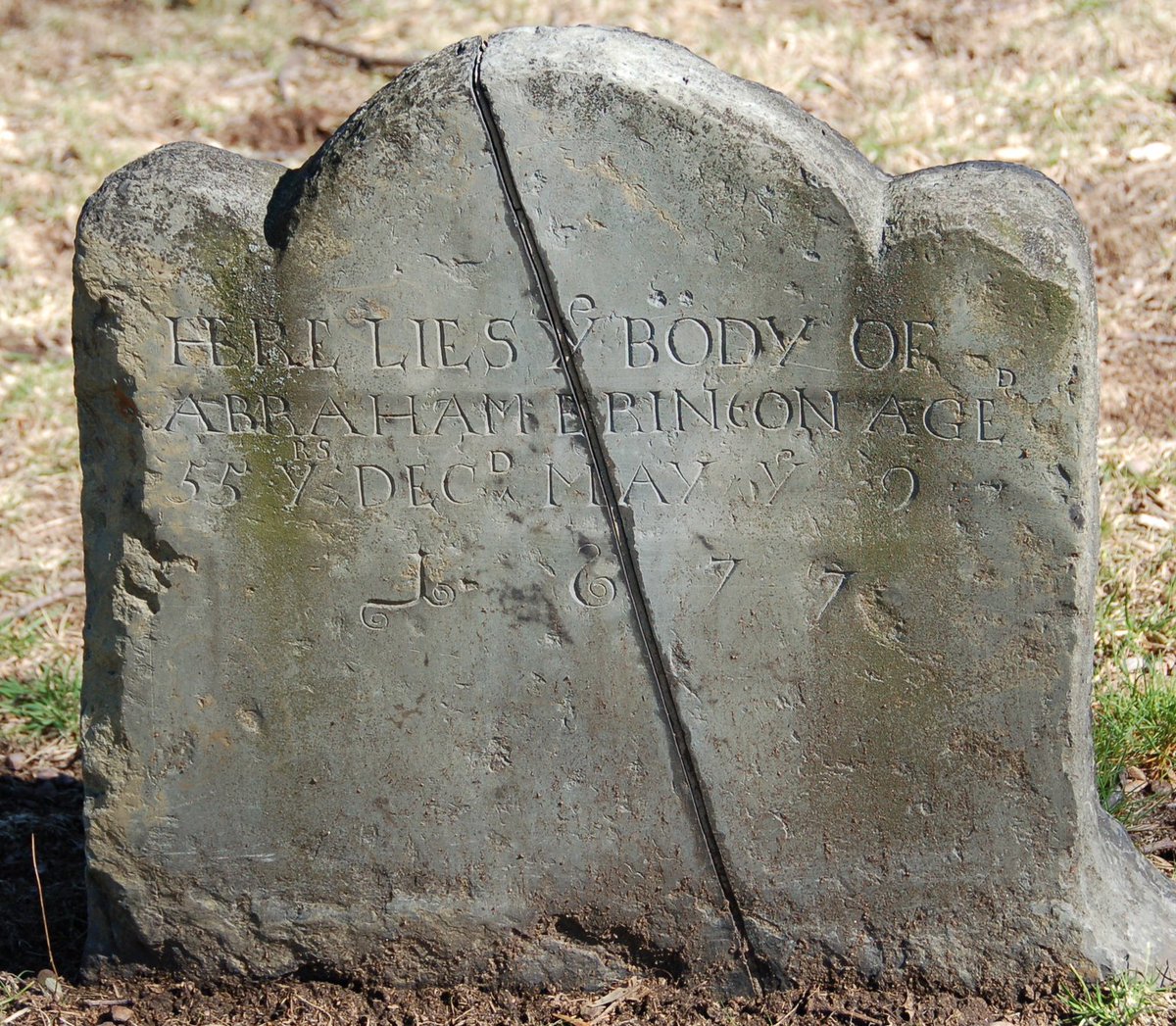One of the vexing questions about 17thc New England gravestones is when they were carved. I argued in my dissertation that there are very, very few stones dated before 1676 and quite a few of those appear to be backdated. (Compare style of Ann Erinton, Cambridge, dated 1653.)
I think it's more likely that Ann Erinton's stone was carved in 1677-ish when Abraham Erinton died (also Cambridge, MA, Harvard Square Burying Ground).
This is one of the reasons I don't subscribe to the idea that skull imagery is particularly "Puritan." That iconography is taken from European pattern books and emerges only in the last decades of the 17th century.
English settlers in Massachusetts/Connecticut did mark graves before 1676, but mostly with wooden posts that were meant to disintegrate within 20ish years. They also used graveyards as livestock pens, so the markers didn't tend to last very long.
When you think of a 17th-century New England settler burying place, don't think of a churchyard full of gravestones. It was more likely to be an unconsecrated, municipally-owned, fenced field on the outskirts of town where people grazed cattle and sheep.

 Read on Twitter
Read on Twitter





